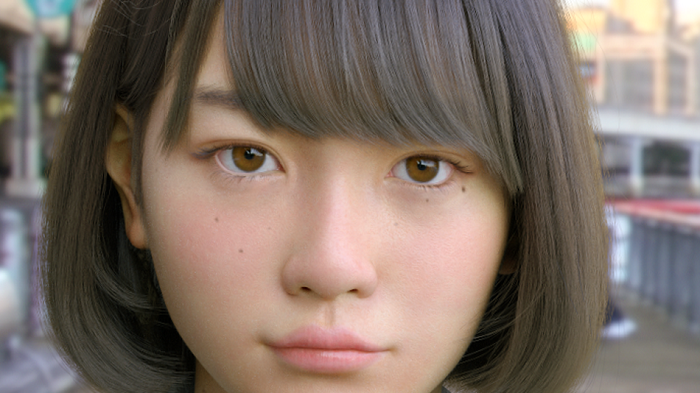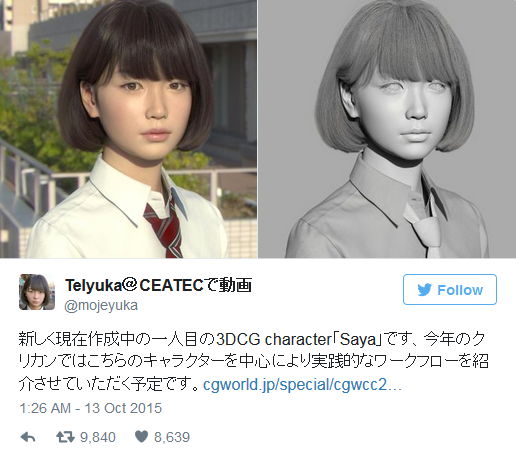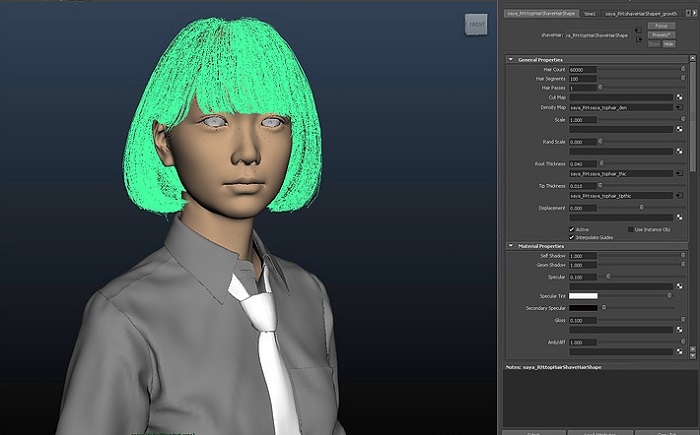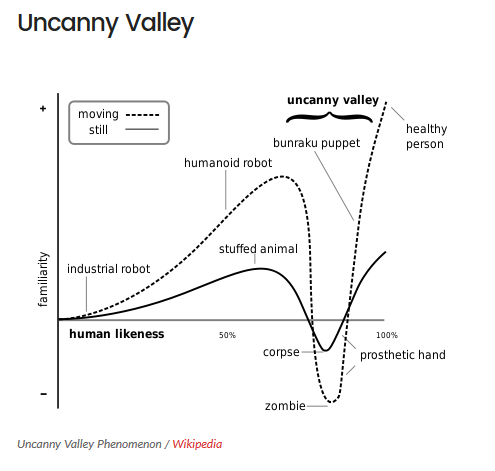The video above features Saya, a computer-generated image (CGI) of a Japanese teenager, who animators and developers alike have been following for the last few months. Created by Tokyo-based couple Teruyuki and Yuka Ishikawa, the character has long been anticipated due to the extreme attention to detail with which the couple has approached its design (all of Saya’s textures are hand-painted and not based off of any sort of photography).

Last year, images of Saya went semi-viral when the Ishikawas showed off some renderings of the character.

Since then, the character has gone through a series of iterations and will continue to be updated in the weeks ahead. The couple has suggested that the final version of Saya might look very different than what’s being presented today.

Saya was initially created by the Ishikawas to star in a short 90-second movie. Due to the extreme attention she received when her image was shared on Twitter (and re-tweeted several hundreds of thousands of times over), the couple decided to invest more time into its details.
The reason why Saya is receiving so much attention is because of its effect on the phenomenon referred to as the “uncanny valley.” For those unfamiliar, the “uncanny valley” comes from the Japanese term “Fushiji no Tani Genshou”, which was coined by Masahiro Mori, and refers to a theory describing the reluctant feeling human beings feel when exposed to things/objects that appear human but are not. It’s the sense that things are “not quite right.”
 Take, for example, today’s exploration into the world of robots that look like humans. Whether it’s the lifeless eyes, sluggish movements, plastic-like skin — when a human is exposed to the bot, they experience a sense that something is not right. CGI animation has the same effect on humans as well.
Take, for example, today’s exploration into the world of robots that look like humans. Whether it’s the lifeless eyes, sluggish movements, plastic-like skin — when a human is exposed to the bot, they experience a sense that something is not right. CGI animation has the same effect on humans as well.
Due to the extreme realism with which Saya has been designed, people have reacted mostly positively to it, thus avoiding the sense of revulsion often associated with the uncanny valley phenomenon, a first for a CGI character, robot, or anything else for that matter.
Japanese news site “withnews” had the chance to see Saya face-to-TV-screen, and reported that standing opposite it felt like they were standing alongside an actual human being.
From the write-up:
“Our vision was stolen by the screen — it gave us a strong feeling that we were standing across from a real girl. Delicately-toned skin, hair stretching to the chin area, the white shirt and red skirt… while standing in front of our eyes was a virtual girl, there was nothing unnatural about any part of her.”
The goal for the Ishikawas is to make Saya so realistic that it would be impossible for people to tell it was constructed using computer graphics. The demonstration at the top of the article, though, shows they still have their work cut out for them, as Saya appears a bit stiff; in particular, the way in which her dress sways when she turns around. It also goes to show the amount of work involved in creating this type of character.
Of course, the Ishikawas are renowned for their work in creating super-realistic models of humans. They first began making CG models of western adult males and females five years ago:


The Ishikawas plans to introduce a second CG Japanese girlfriend in the coming months. It too, will appear in a short movie. They are also beginning to explore virtual reality video, where users will be able to feel like they are in the same world as the two girls.
The couple hopes to “polish Saya sufficiently to make her play an active role in many spheres, including making her the lead CG model for research institutions.”
Via Gurashii
Advertisement
Learn more about Electronic Products Magazine





